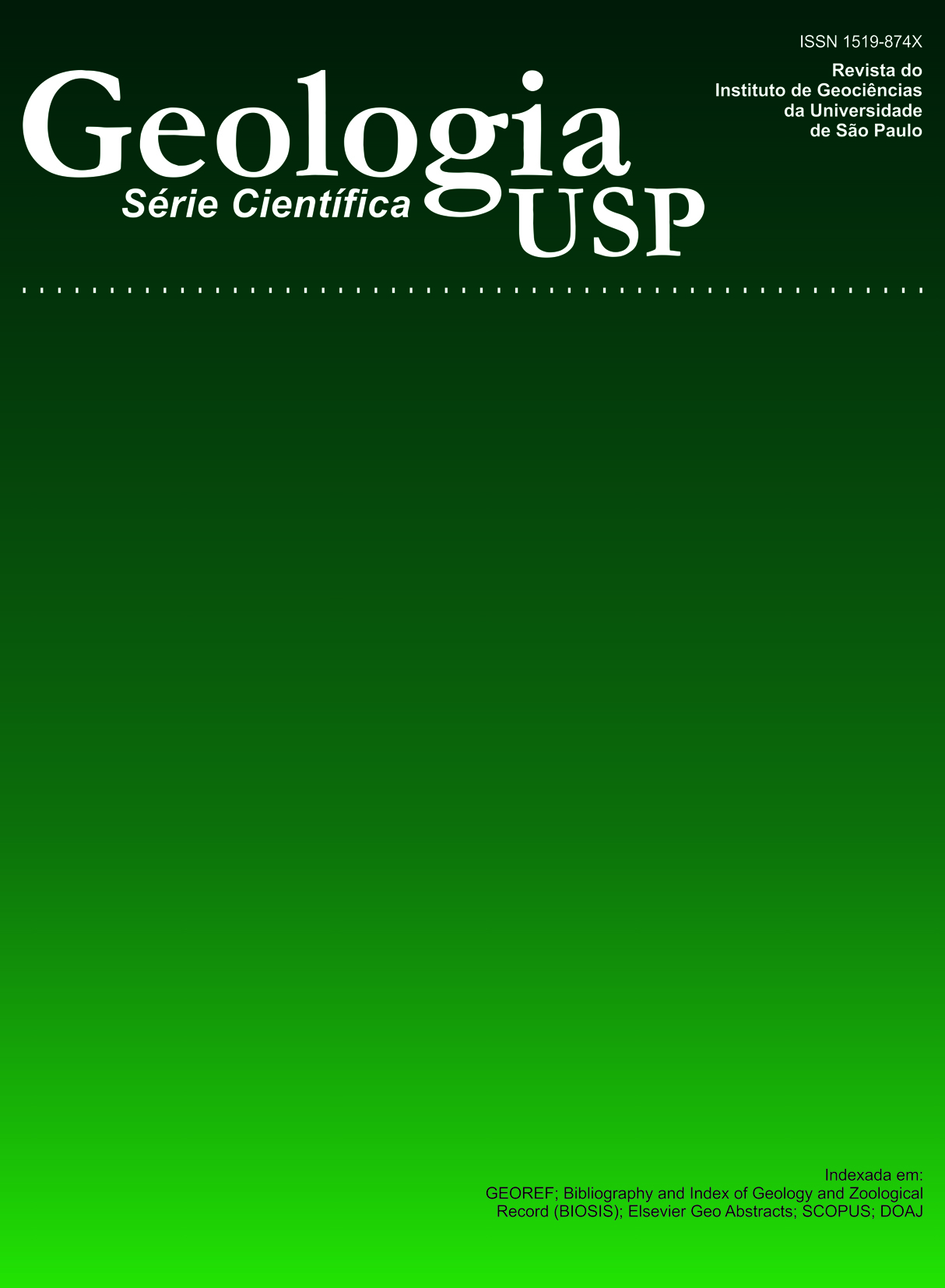A new permian bivalve (megadesmidae, plesiocyprinellinae) from the serrinha member, Rio do Rasto Formation, Paraná Basin, Brazil
DOI:
https://doi.org/10.5327/Z1519-874X2010000200002Keywords:
Bivalvia, Megadesmidae, Permian, Paraná Basin, Serrinha Member, Rio do Rasto FormationAbstract
During a recent inspection in the Paleontological Collection of the Institute of Geosciences, University of São Paulo, we have identified some specimens of undescribed mollusk bivalves. These called our attention for the following reasons: a) all specimens are internal molds of conjugated and closed articulated valves, some of them presenting fragments of silicified shells; b) all internal molds have similar general shape and internal characters, representing specimens of the same taxon; c) the internal molds and silicified valves are well preserved, including fragile structures, which are hardly preserved, such as the internal mold of the external ligament and muscle scars; d) and equally important, according to the labels of all specimens, they were collected from rocks of the Passa Dois Group (Permian), Serrinha Member of the Rio do Rasto Formation. Although who collected the shells and the precise geographic location of the specimens are still unknown, the detailed study of these fossils brings us to the conclusion that they are morphologically distinct from any heretofore published genus of the endemic fauna of bivalves from Passa Dois Group. Based in its general shape, hinge structure and muscles scars, the new form can be classified under the Family Megadesmidae Vokes, 1967, the most diverse group of Permian bivalves of the Paraná Basin. The specimens are referred as Beurlenella elongatella new gen. and sp. The shell shape and taphonomy indicate that this bivalve was a shallow, rapid, active burrower, suspension feeder, probably preserved in situ, in event deposits.Downloads
Download data is not yet available.
Downloads
Published
2010-07-01
Issue
Section
Articles
License
Authors who publish in this journal shall comply with the following terms:
- Authors keep their copyright and grant to Geologia USP: Série Científica the right of first publication, with the paper under the Creative Commons BY-NC-SA license (summary of the license: https://creativecommons.org/licenses/by-nc-sa/4.0 | full text of the license: https://creativecommons.org/licenses/by-nc-sa/4.0/legalcode) that allows the non-commercial sharing of the paper and granting the proper copyrights of the first publication in this journal.
- Authors are authorized to take additional contracts separately, for non-exclusive distribution of the version of the paper published in this journal (publish in institutional repository or as a book chapter), granting the proper copyrights of first publication in this journal.
- Authors are allowed and encouraged to publish and distribute their paper online (in institutional repositories or their personal page) at any point before or during the editorial process, since this can generate productive changes as well as increase the impact and citation of the published paper (See The effect of Open Access and downloads on citation impact).
How to Cite
Anelli, L. E., Simões, M. G., & David, J. M. (2010). A new permian bivalve (megadesmidae, plesiocyprinellinae) from the serrinha member, Rio do Rasto Formation, Paraná Basin, Brazil . Geologia USP. Série Científica, 10(2), 13-21. https://doi.org/10.5327/Z1519-874X2010000200002





